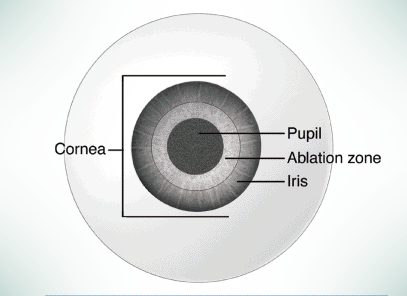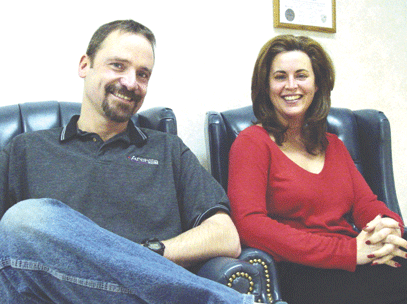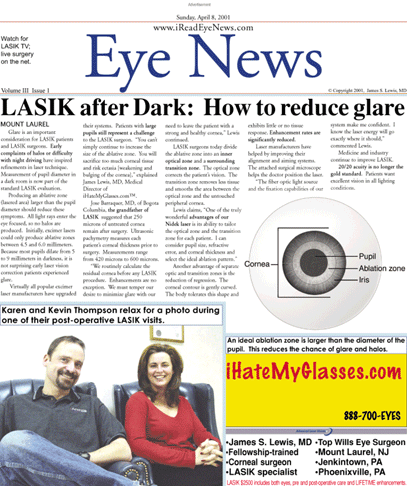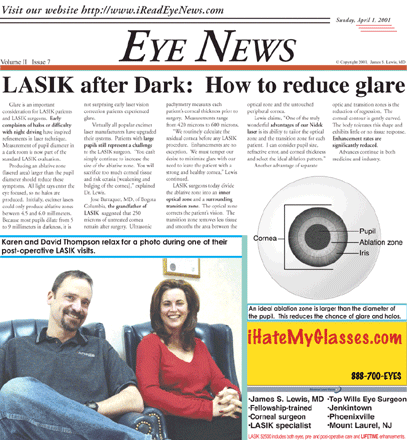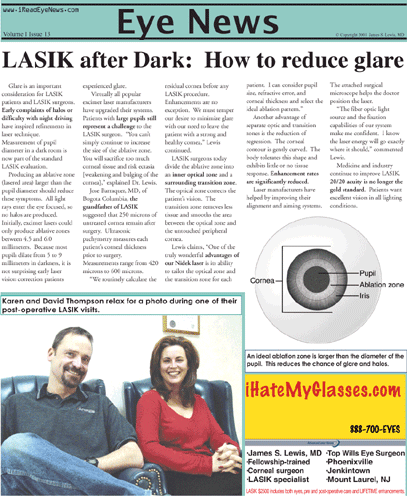Eye News Volume II Issue 8

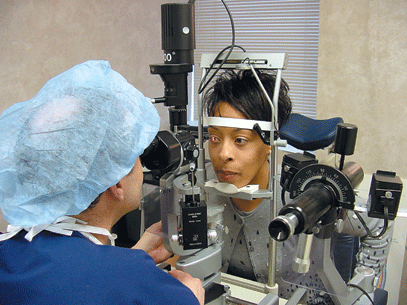
Patients who have progressive difficulty tolerating their contact lenses may have dry eye. This can be the cause of their inability to wear lenses. Intolerance often results from decreased tear production (hormonal changes, aging, corneal anesthesia from prolonged lens wear) or lid margin disease (poor tear quality). Because dry eye motivates patients to have LASIK it is not surprising these symptoms may continue post-operatively.
James Lewis, MD, a subspecialist in Cornea and External Disease, explains, “The quality and quantity of tears must be evaluated and enhanced before and after LASIK. Failure to address dry eye can result in a less than satisfactory result.”
LASIK is somewhat traumatic even in the most skilled hands. When the microkeratome is applied patients can suffer damage to their goblet cells. These cells are vital to a healthy tear film. Flap creation temporarily severs corneal nerves and reduces corneal sensitivity. This interferes with the feedback mechanism and tear production. Toxicity from pre-operative and post-operative antibiotics, steroids and their associate preservatives can influence corneal health.
“Long term contact lenses stress ocular health. LASIK is also not without its problems. Maintaining the tear film is our most important post-operative task,” Lewis added.
Non-preserved tears have been vital in the treatment of dry eye. Usually, these compounds come in small, single use, plastic containers. Most recently, pharmaceutical companies have added nutrients including electrolytes to rejuvenate the conjunctival goblet cells.
Most artificial tears contain methylcelluose, and a pH balanced system to supplement one’s natural tear production. The post-LASIK cornea must have a smooth, lubricated surface to function adequately and heal normally.
Patients have found the single dose tears to be burdensome. Several manufacturers have added sodium perborate as a “benign preservative.” This allows patients to carry a convenient bottle of tears without suffering the consequences of standard preservatives.
“Treatment of lid diseases like rosacea and blepharitis can dramatically influence the post-operative course of our LASIK patients,” Lewis continued. This often includes pre-LASIK warm compresses, lid-scrubs, and antibiotic ointments. In rare occasions Ophthalmologists will initiate a course of oral Tetracycline to enhance the quality of the tear film before surgery.
Temporary collagen based punctal plugs have become an important weapon against dry eye. The plugs block the rapid exit of tears. A patient’s residual tear film stays in the eye longer. The cornea stays lubricated.
Permanent punctal plugs have been available for a decade. They are silicone and last indefinitely. Collagen plugs only last one to two weeks.
Oasis, of Glendora, California has designed an extended action punctal plug. Because LASIK patients need temporary help permanent, silicone plugs may not be ideal. Temporary collagen plugs don’t last long enough.
The Collagen-ED has been designed to function between one and four months. This is exactly the duration required by most LASIK patients. These plugs are in clinical trials.
“I am honored to be one of the Clinical Investigators chosen by Oasis for the Collagen-ED. It may represent an important option for our LASIK patients,” Lewis explained.
The treatment of dry eye in LASIK may lead to benefits for patients with severe rheumatologic disease and other immunologic disorders. In this group dry eye can represent a sight-threatening disorder. Fortunately, LASIK induced dry eye, when well managed, is usually little more than an inconvenience.
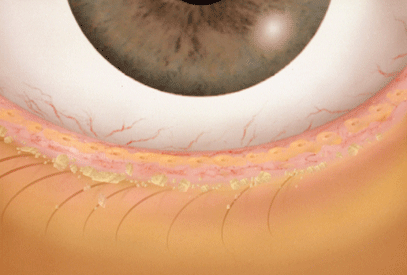
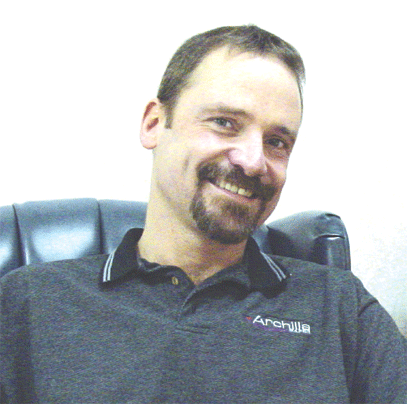
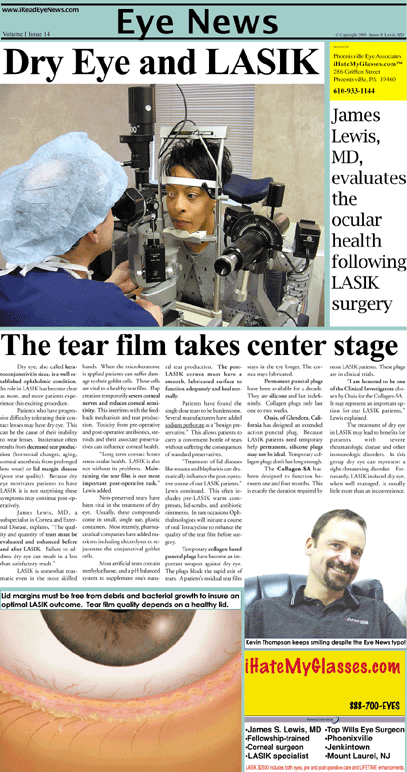
Over the course of his career, Dr. Lewis has helped numerous LASIK Bucks County / Philadelphia patients realize their vision correction goals. He is highly regarded as an experienced LASIK specialist and a leading Philadelphia Epi-LASIK surgeon. For individuals who desire to eliminate their dependence on glasses but cannot undergo laser eye surgery, Dr. Lewis offers implantation of permanent contact lenses, Visian ICLs in Philly.


